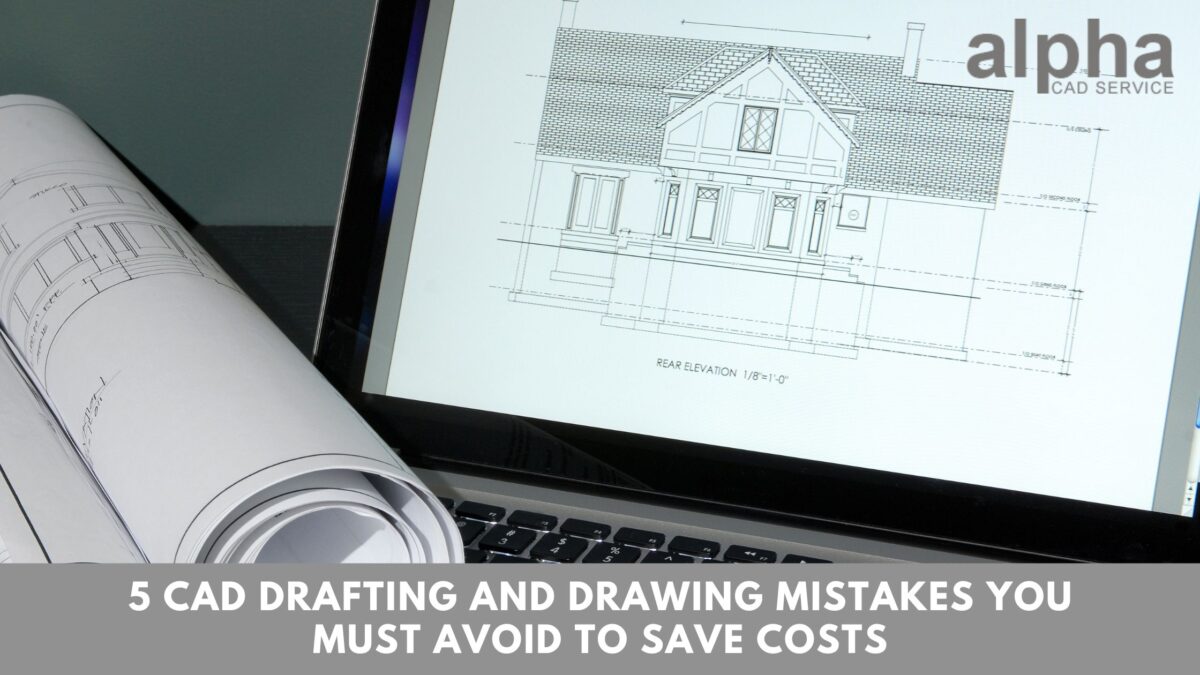As an engineer or architect, precision is critical in your field. However, even the slightest mistake can be costly in Computer-Aided Design (CAD) drafting and drawing.
While CAD software has made it easier to create accurate drawings, some common mistakes might still happen during the drafting process. But with a professional CAD drafting service, you can rest assured knowing your drawings will be free of errors
This blog post will discuss five of the most common mistakes made during CAD drafting and drawing and how you can avoid them.
Common CAD Drafting and Drawing Mistakes to Avoid
1. Overloading Your Reader With Symbol Use Can Obscure Your Message
Impact:
Drawings with lots of symbols can be misinterpreted and lead to errors. Although additional details can add value and positively influence design communication, an overabundance of information crammed into a small drawing makes it hard to read and understand. Too many symbols also make a drawing look cluttered, which can obscure the message you’re trying to communicate.
What You Can Do:
Ensure that every CAD draft includes prominent details. But, if you feel that every last detail is essential, creating detailed drawings may be the way to go. Instead of creating single, overloaded drawings, you can break down your design into a series of smaller drawings that focus on specific details.
If you go the detailed drawing route, it’s important to consider the best way to break down your design so the overall message is still conveyed. For example, if you’re working on a building design, you may want to create separate drawings for the exterior, each floor, and major interior spaces.
2. Poor Dimensional Accuracy and Tolerances
Impact:
Dimensions are crucial in drawings for machining operations, raw material decisions, and space occupation. Usually, a team of engineers creates drawings piece by piece. Unfortunately, when each team member follows their process, the final product usually differs from what was initially envisioned, leading to wasted time and resources and missed deadlines.
What You Can Do:
To achieve dimensional accuracy and tolerances, it is essential to unify the standards followed by the team.
Before starting work on the drawing, all engineers should know the company’s dimensions and tolerances standards. This way, everyone uses the same measurement system and works towards the same goal.
If your company doesn’t have set standards, it is time to create them. Work with your team to establish what dimensions and tolerances are critical for your drawings and agree on a system to use.
3. Using Too Much or Too Little Line Weight
Impact:
If lines are not appropriately weighted, readings drawn from them could be ambiguous. As a result, it often leads to incorrect decisions, delayed projects, and wasted resources.
What You Can Do:
For numerous reasons, line weights are key in design: they show relationships between two objects, create depth, and add clarity and legibility. When using line weights in your drawings, be consistent and use a width that works well with the paper size you’re working with.
As a general rule of thumb, wider lines should be used for preliminary information, while thinner lines should be for secondary details. It is also necessary to consider the scale of your drawing when deciding on line weights.
The professionals outsource CAD drafting services will have extensive experience with line weights and can help you create drawings that communicate your message effectively.
4. Compositing all Components in a Single Layer
Impact:
When all parts are shown in one layer, revisions become more complex. It is because the designer obscures the drawings when ECOs are increased.
What You Can Do:
Drawing features in distinct layers allows the manufacturer to distinguish objects easily. It also saves you the trouble of defining properties for each object. Instead, you have to define layer properties, and you’ll be good to go.
Not everyone is familiar with the benefits of working with layers. As a result, they continue to work on drawings that only have one layer. If you’re working with a team, educating them on the importance of using layers in drawings is important.
5. Not Following The Model with the Drawing Impact
Impact:
If 3D models and 2D drawings are not in sync or the more minor details go unnoticed, misalignment can occur—production mistakes due to incorrect or incomplete information cause you to fall behind and risk losing the contract.
What You Can Do:
When starting a new task, take the time to ensure that your 2D drawings and 3D models are properly aligned. This way, you can avoid any problems down the line. CAD service can help you with this task and ensure that your drawings are accurate as they have the latest tools and software to make changes in the drawing.
If you already have drawings that are not in line with your 3D model, it’s important to take the time to fix them. It will save you time and money in the long run.
In Conclusion
These are five of the most common mistakes made while creating CAD drawings. By avoiding them, you can save time and money and produce accurate, easy-to-understand drawings.
If you need help with your drawings, don’t hesitate to contact a professional CAD drafting service. They will have the experience and expertise to ensure that your drawings are error-free and meet all industry standards.


